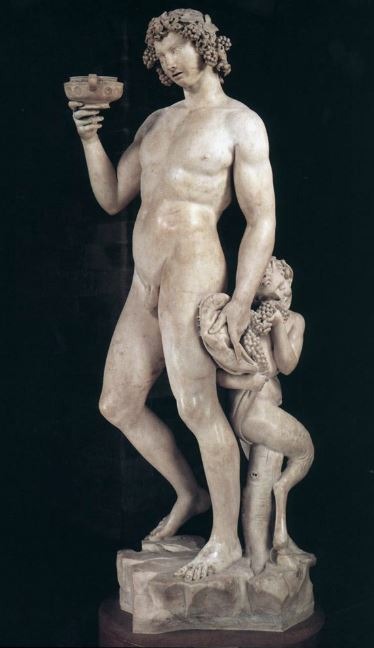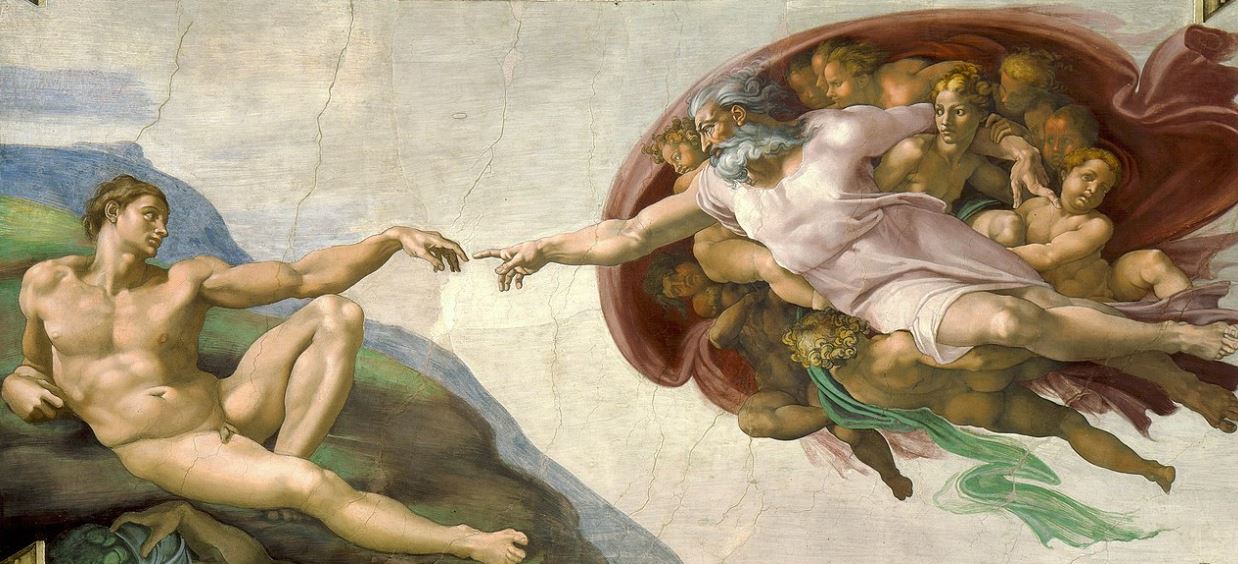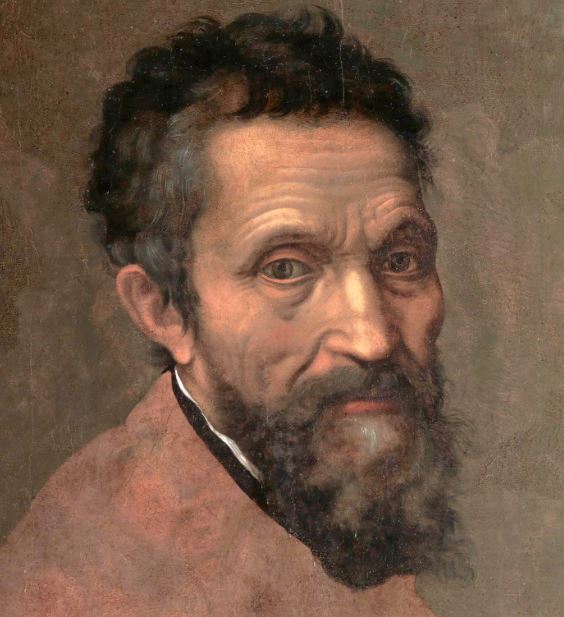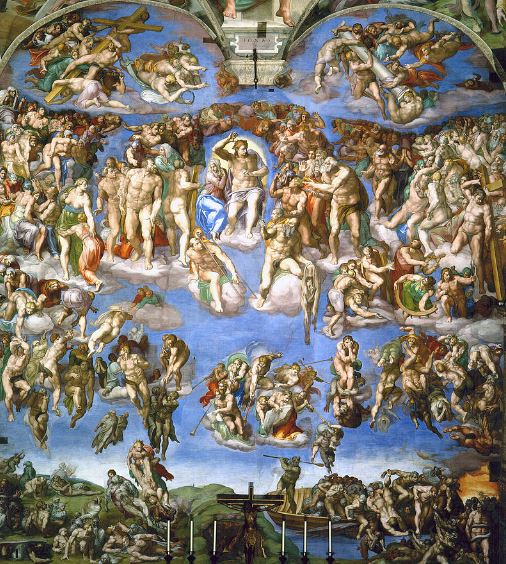Michelangelo di Lodovico Buonarroti Simoni was one of the finest Renaissance artists, and his sculptures and paintings rank among the greatest works of all time. His reputation as a sculptor began when he was just 25. Commissioned by Cardinal Jean de Billheres for a monument for Pope Julius II, Michelangelo completed “Pieta” in 1499 and then his most famous work, David. But this is only part of his story. Here are some highlights from Michelangelo’s life:
Early Life
Michelangelo was born in Caprese, near Pisa, on March 6, 1475. His father was a Florentine wool merchant named Lodovico di Leonardo Buonarroti Simoni. His mother was Francesca di Lorenzo Gherardini, but she died when Michelangelo was only six years old. Michelangelo’s father, Lodovico di Leonardo, worked for the Florentine government, and shortly after his birth in 1475, the family moved back to Florence, where Michelangelo would live for the rest of his life.
In 1488 at 13, Michelangelo began studying art in Florence under Bertoldo di Giovanni and Domenico Ghirlandaio. He also studied poetry with Angelo Poliziano for about two years during this time period.
In 1492, Michelangelo received his first commission to paint an altarpiece for the chapel of St Peter’s Basilica in Rome called “The Baptism of Christ.” Around this same time, he began working as an apprentice sculptor for Lorenzo de’Medici, who owned several marble quarries outside of Florence, where Michelangelo would have access to raw materials needed for sculpting works like those seen above.
Michelangelo flourished during the Italian Renaissance, a period marked by artistic rebirth in Florence. He lived most of his life in Florence, Italy. He eventually made a move to Rome and worked there on several projects.
Michelangelo studied philosophy and politics under the tutelage of scholars and intellectuals belonging to Lorenzo de’ Medici’s circle. His later work reflected many of the ideals he had first encountered there. While he was staying in the Medici home, Michelangelo refined his technique under the tutelage of Bertoldo di Giovanni, a noted sculptor who kept Lorenzo de’ Medici’s collection of ancient Roman sculptures.
The Vatican Years
For most of his life, Michelangelo lived and worked in Rome. He was commissioned to paint the ceiling of the Sistine Chapel by Pope Julius II in 1508. His depiction of God creating Adam is one of the most famous works, but it wasn’t all good times for him at the Vatican. In 1527, he left Rome for Florence and spent years working on sculptures for Medici family tombs.
He also painted an altarpiece depicting scenes from Jesus’ life (the Last Judgement) for a church near Florence called Santa Maria del Fiore (or “Saint Mary of the Flower”). After returning to Rome in 1534, he took up residence at Cardinal Farnese’s house, where he was given a studio among other artists while completing several projects, including:
In 1543, he began work on his last major undertaking—the Tomb of Pope Julius II (1443–1513). The following year he finished construction on what would become known as “The Slaves” or “Captives” because they appear trapped within their stone prison walls; one even appears to be crying out from behind bars. This piece was meant to be installed alongside two others that were never completed due to Michelangelo’s death just seven months later at age 89 on February 18, 1564.
Important Art by Michelangelo
1. Bacchus

The statue of Bacchus depicts the Roman God of wine in an intoxicated state. Wearing a wreath of ivy, he holds a goblet in one hand while the other holds a lion’s skin. The lion’s skin represents the myth of Hercules, which symbolizes death.
A satyr appears behind Bacchus’s left leg, a creature significant to the cult of Bacchus and often representing a drunken, lusty, woodland deity.
Michelangelo’s sculpture of a naked man was controversial. It was commissioned by Cardinal Riario, who rejected it when he saw it. Michelangelo then sold the sculpture to his banker Jacopo Galli instead.
Although it is allegorical, the piece is evidence of Michelangelo’s early genius. His knowledge of anatomy can be depicted in the androgynous figure’s body, which Vasari described as having “the slenderness of a young man and the fleshy roundness of a woman.”
2. Pietà
Pietà is a sculpture by Michelangelo, created in 1499. It is housed in St. Peter’s Basilica in Vatican City. The statue depicts the Virgin Mary cradling the body of Jesus Christ after his crucifixion. The statue is “one of Michelangelo’s most moving sculptures” because it captures Mary looking down upon her son with pity and sadness.
3. David
The David is a masterpiece of Renaissance sculpture created by Michelangelo in Florence, Italy. The statue, 17 feet in height, depicts a nude male standing with his left leg forward. The figure represents the Biblical hero David, a favorite subject in Florentine art. The eyes of David, with a warning glare, were turned towards Rome.
The sculpture was originally commissioned as one of a series of statues of prophets to be positioned along the roofline of the north side of the Florence Cathedral, above the door to the sacristy (where they would be seen by those entering). The statue was moved to the Accademia Gallery in Florence in 1873.
4. The Creation of Adam

One of Michelangelo’s most famous works is The Creation of Adam (1508-1512). This painting was done for the ceiling of the Sistine Chapel in Rome. It shows God reaching out to touch Adam’s hand as he creates life on earth. The image symbolizes how humans are made in God’s image and are able to do great things because we have been given his divine power.
The painting has become a symbol for all mankind because it shows how we all share a similar connection with God and how we can use our gifts to make positive contributions to society and humanity as a whole.
Contrary to the depictions of God in traditional artworks, Michelangelo wanted to show that God is not aloof or separate from man but one with him.
5. Moses
Moses In 1513, Michelangelo was commissioned by Pope Julius II to create a sculpture of Moses for the tomb of Pope Julius’ deceased uncle, Pope Sixtus IV, in St Peter’s Basilica in Rome. While working on this project, he received his first commission as an architect to design the façade of San Lorenzo in Florence (the Medici family church).
The statue is carved from marble and stands 13 feet tall (4 meters). It shows Moses with horns on his head because, according to legend, this happened when he struck the rock at Meribah and water gushed forth instead of blood as he had intended: “The Lord said unto him [Moses], ‘Who hath made man’s mouth? Or who maketh him dumb or deaf, or seeing or blind? Is it not I?’
6. Last Judgement
Michelangelo’s most famous work is the Last Judgement, a fresco painted on the altar wall of the Sistine Chapel in Rome. The fresco was commissioned by Pope Julius II to cover a large space above and behind the altar, with figures of Christ and His apostles arranged around him.
The work took five years to complete (1536-1541), but Michelangelo had to deal with interruptions from Julius II, who viewed it as his own private chapel rather than an official church building. This caused delays and arguments between them, but he eventually completed it in 1541 when he was 66.
In the style of his usual works, Michelangelo depicted the scene in controversy by portraying its subjects nude and with extremely muscular anatomies. His depiction of Jesus’ face was unusual for the time period, as were the mythological figures he included in the painting.
The Legacy of Michelangelo
Michelangelo was considered one of the great artists of the Renaissance, along with Leonardo da Vinci and Raphael. He was also one of the primary forces behind the revival of Classical literature and philosophy during the 15th and 16th centuries.
Michelangelo’s work was informed by his deep spiritual belief in humanity and his understanding of the human body. He was known for the technical accuracy of his sculptures, which were often made from marble.
Michelangelo’s ability to capture emotional energy and physical realism in his work is unparalleled. His Pieta, David, and Sistine Chapel frescoes continue to be among the most revered works of art in history.
Michelangelo’s influence on other artists was profound, with his successors including Raphael, Rubens, Bernini, and Rodin.
Death
Michelangelo dictated his letters in January 1564 because he could no longer write. In his final will, he bequeathed his soul to God, his body to the earth, and his possessions to his relatives.
While working on the Rondanini Pietà, Michelangelo became feverish, burning piles of sketches and drawings. Even in his final days, he was conscious of his reputation and did not want to leave behind anything he did not deem perfect or worthy.
On February 18, 1564, Michelangelo’s doctor wrote to Duke Cosimo in Florence to inform him of the artist’s death. Michelangelo died in 1564, at age 88. In the same year, two legends, Galileo and Shakespeare, were born.
Michelangelo’s death was deeply mourned by Rome. His body was moved to Santi Apostoli, adjacent to Palazzo Colonna and a few blocks from his home. The funeral was attended by the entire artistic profession, as well as all his friends.
Michelangelo was buried in a tomb in the church of the Santi Apostoli in Rome on December 21, 1564, while Pope Pius IV planned to erect a special memorial and tomb for him in Saint Peter’s Basilica.
Conclusion
Michelangelo’s sculptures, paintings, and frescoes rank among the most famous in history; many of his works are still highly regarded today. His sculptures are some of the most beautiful pieces ever created, while his paintings were thought to be some of the best at depicting human emotion and expression.
He lived during a time when art was considered more than just decoration; it was seen as an important part of society that could teach people about themselves and their world. Michelangelo helped make this happen by showing how powerful these ideas were through his own work: he showed us what it means to be human through his sculptures and paintings.


